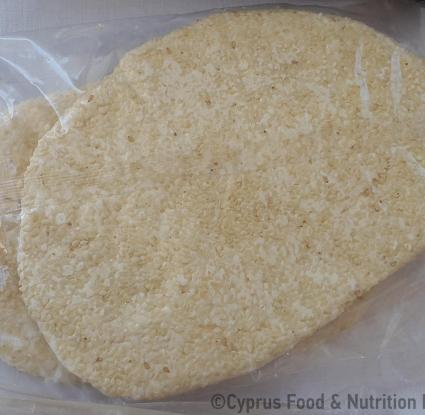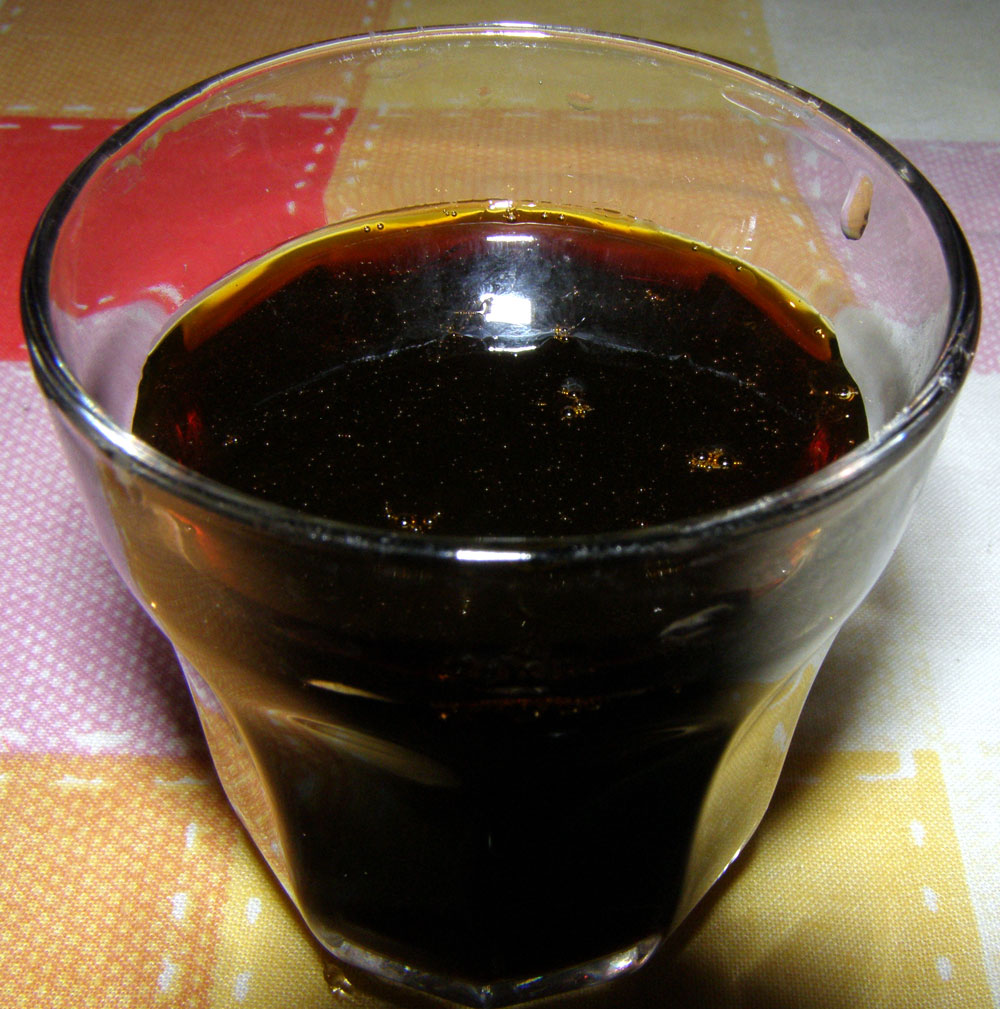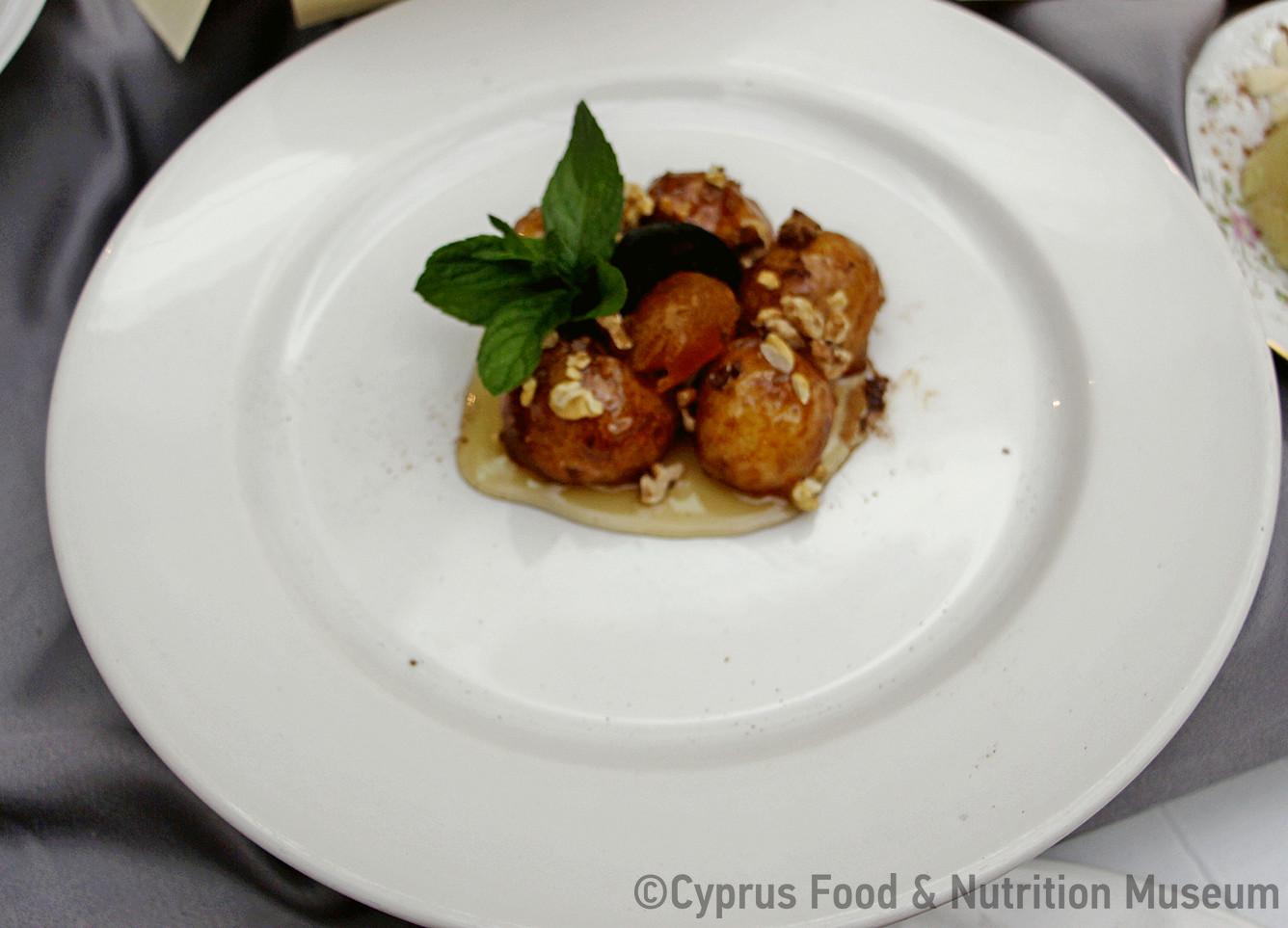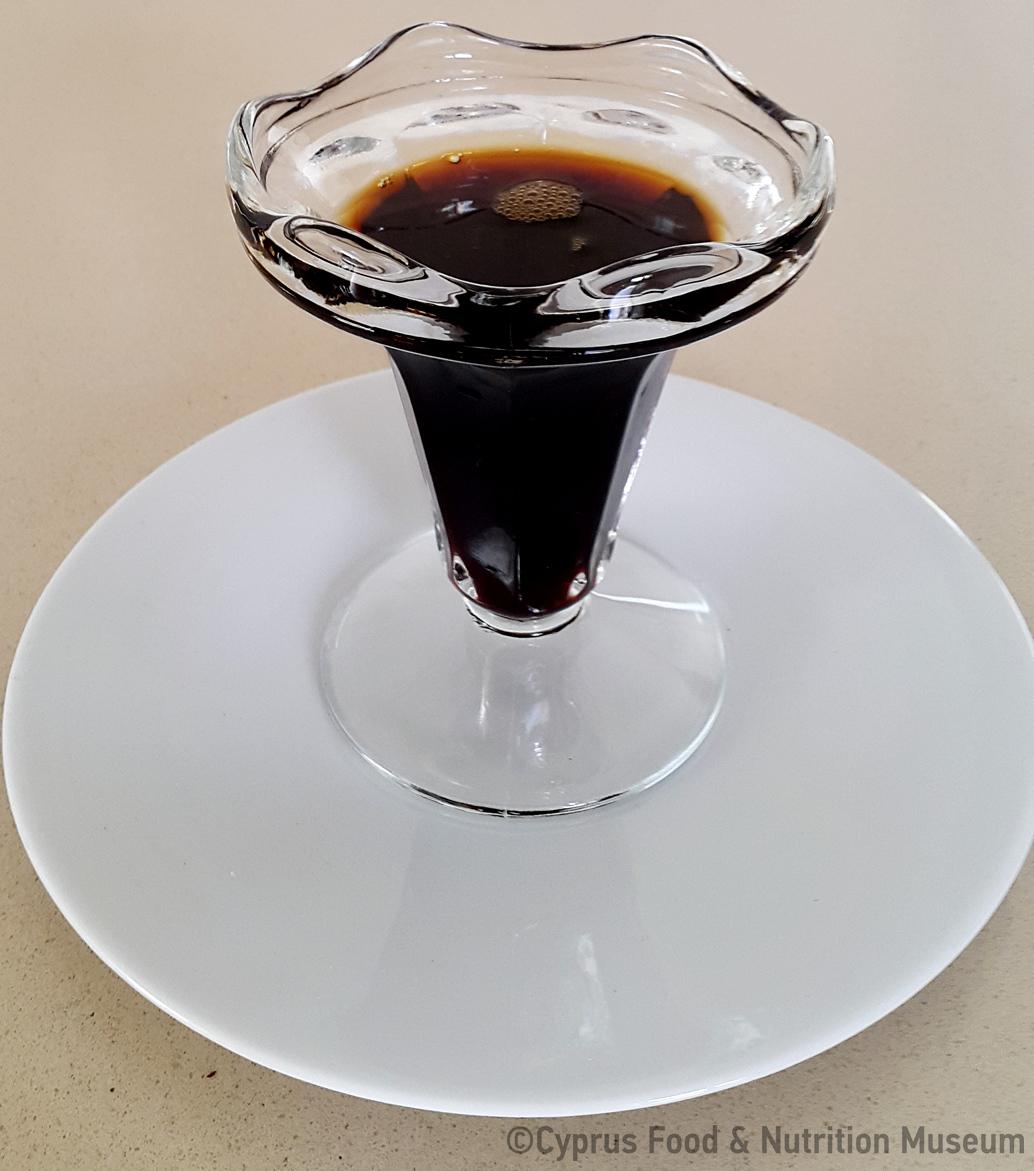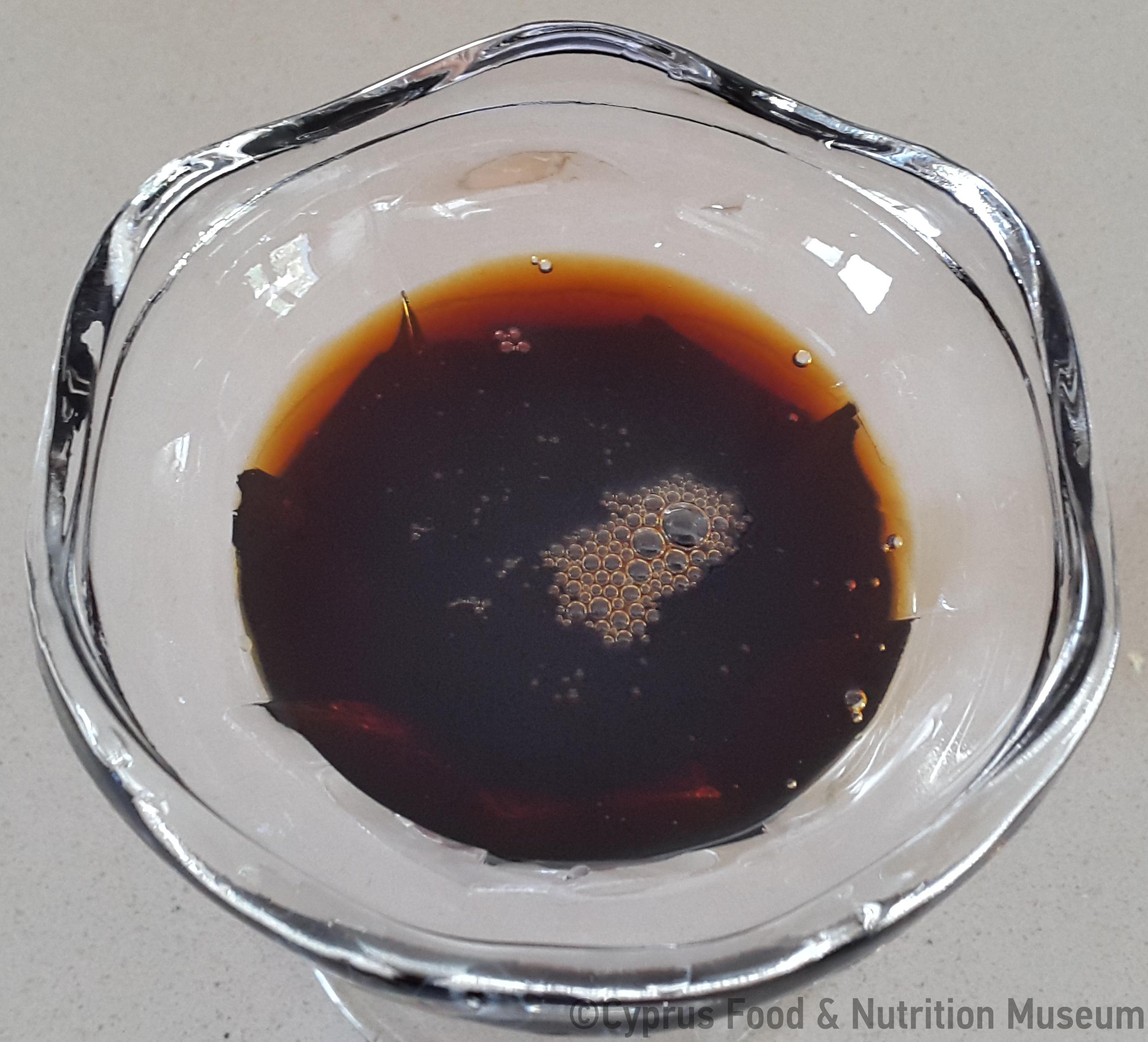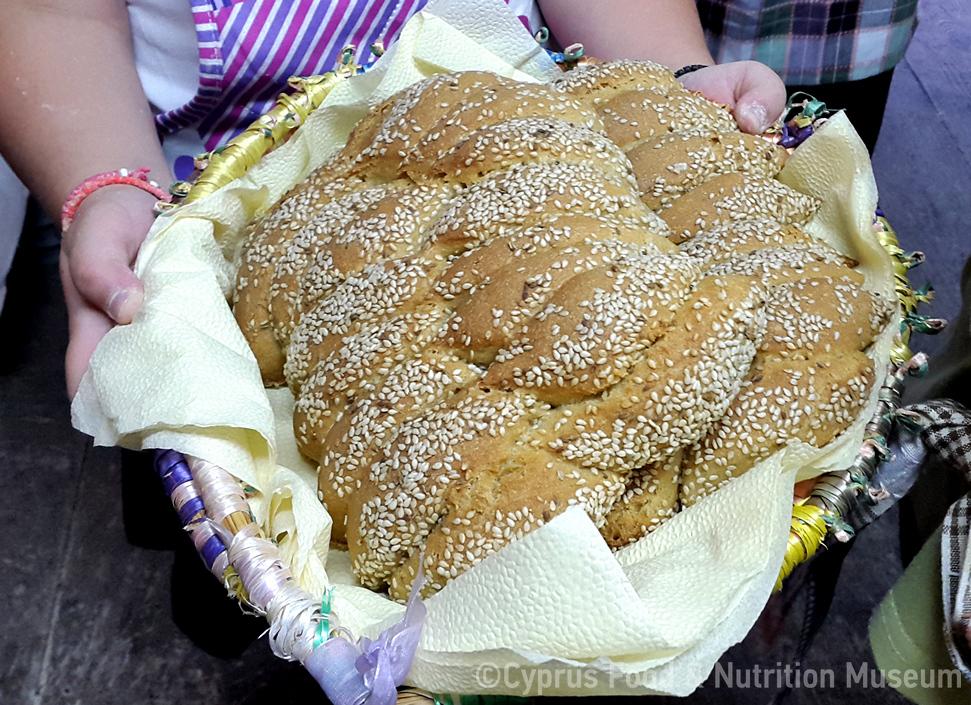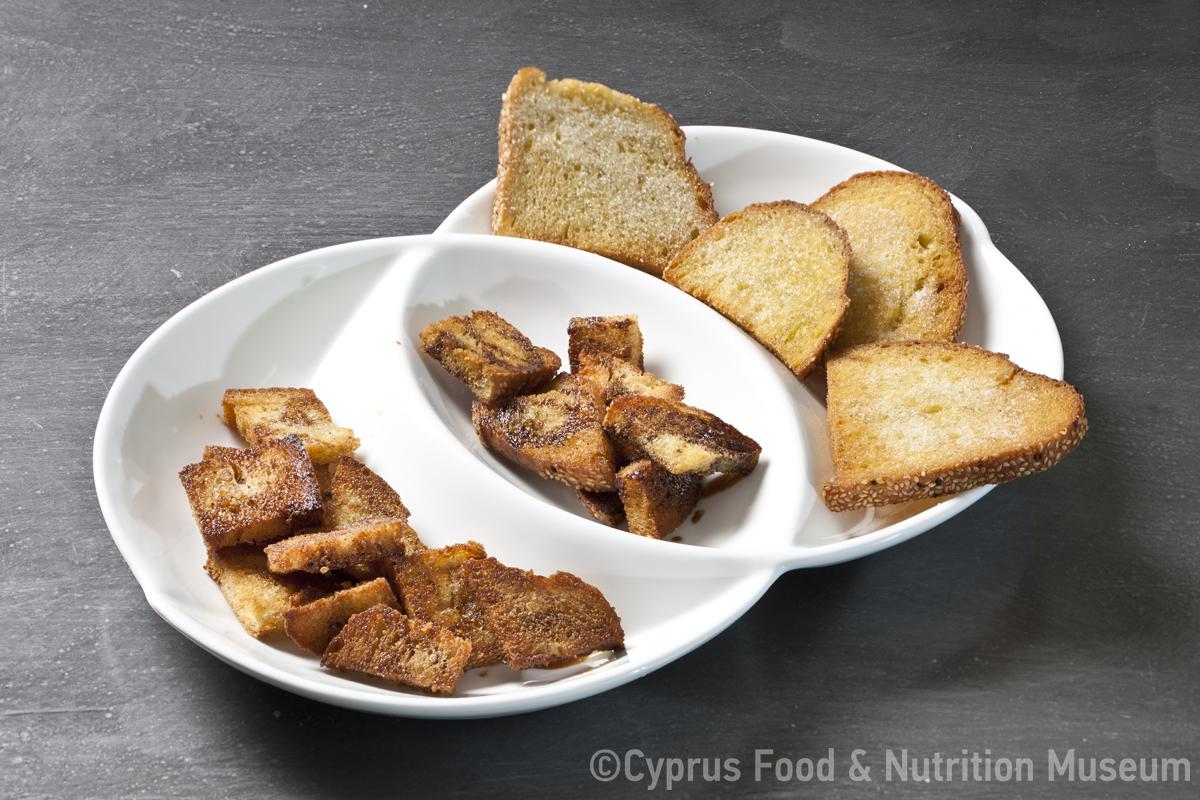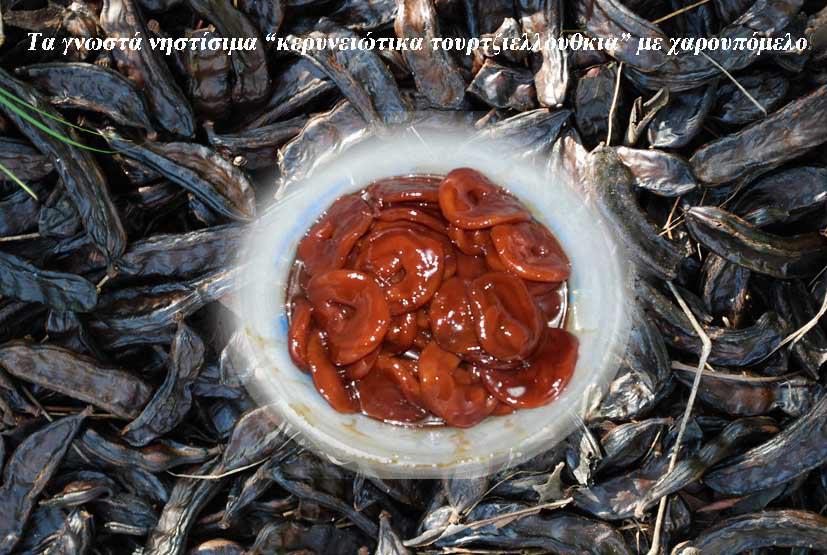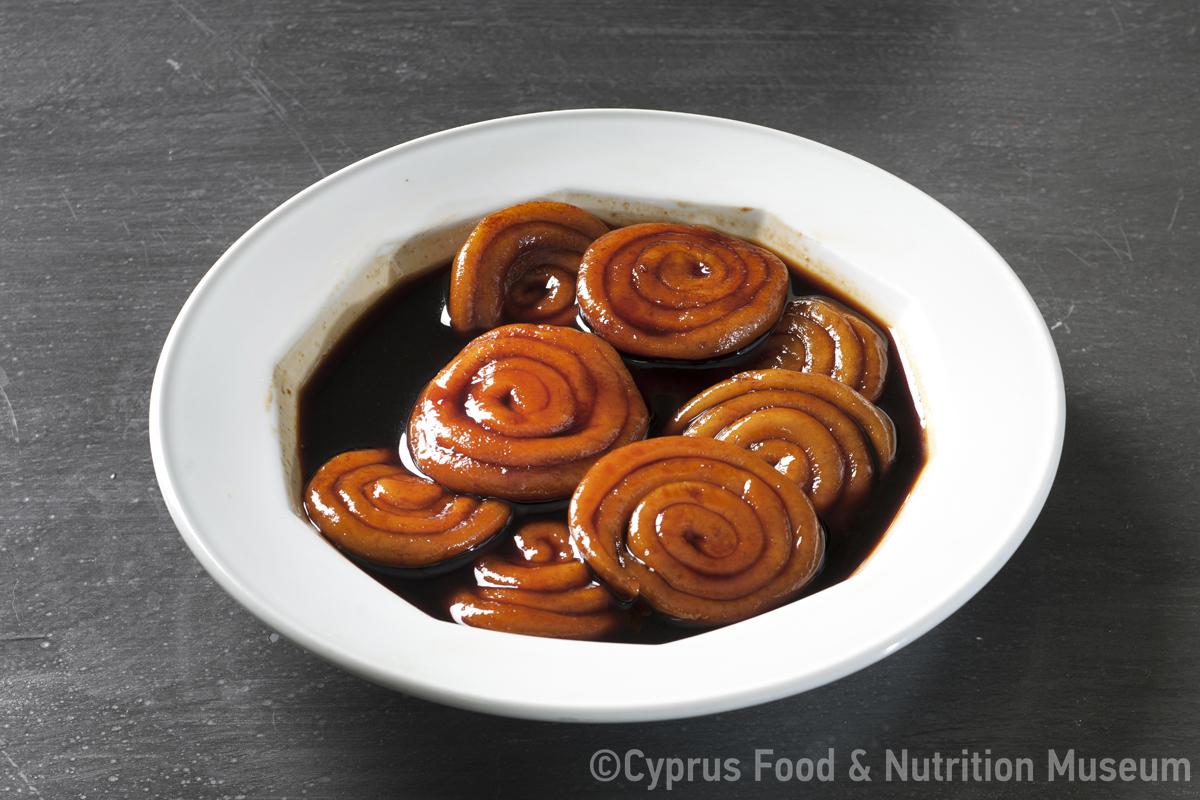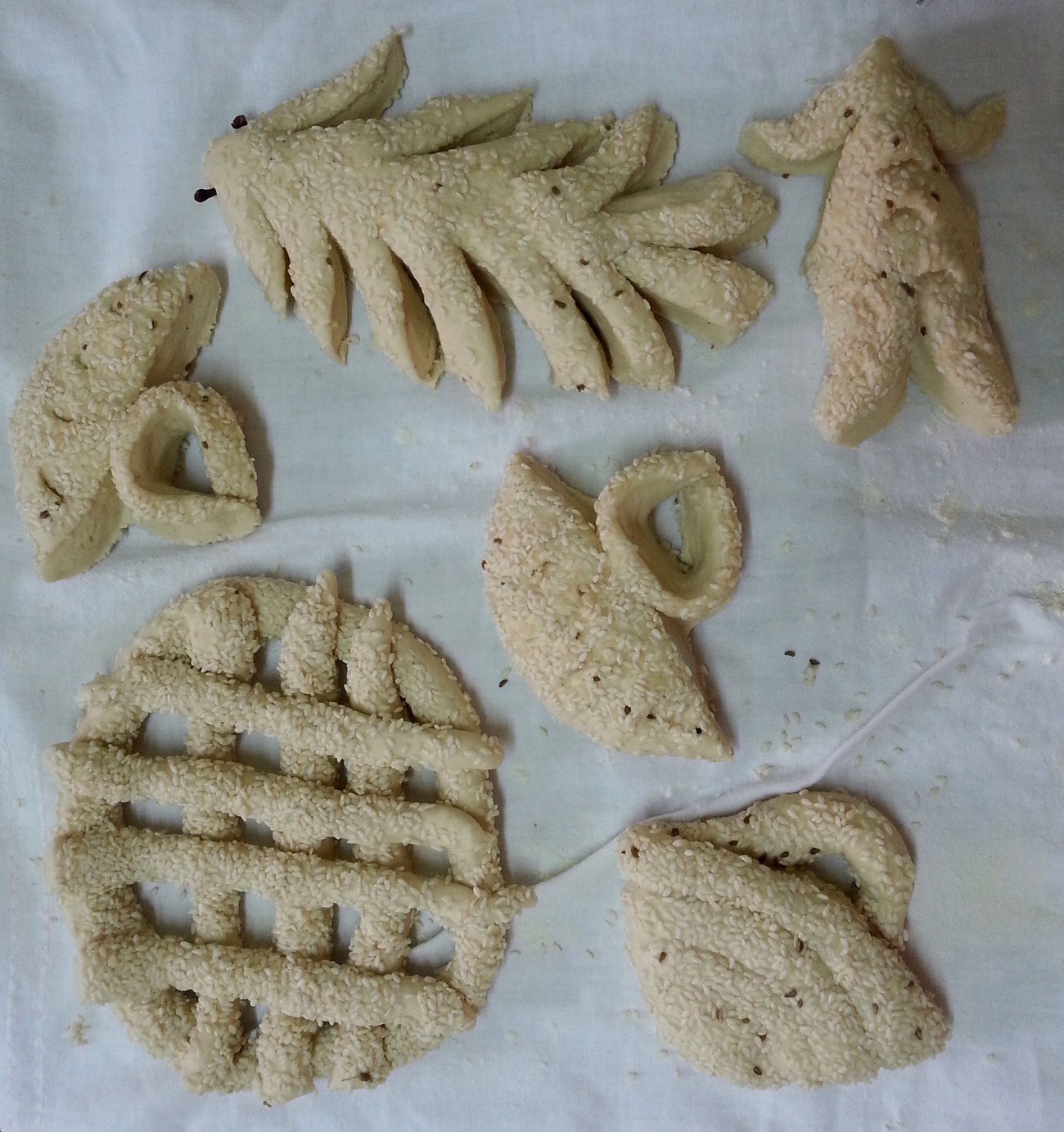The recipe comes from Marathasa. Sesamopites were one of the products sold by the people of Marathasa at festivals, along with porika, nuts, shoushoukko and pastellin.
Name - Recipe
Σησαμόπιτες.
A sweet delicacy made of sesame seeds and carob syrup or epsima or sugar.
500gr sesame seeds
500gr epsima
Cornoil
In a pan, lightly toast the sesame seeds, stirring constantly. In a saucepan, bring the epsima to a boil for 10 minutes. Lower the heat and let it simmer (be careful not to overcook and caramelise!). Add the toasted sesame seeds and stir. Check to see if it's ready: pour a small spoonful of the mixture into a plate and if, once cool, you can remove it easily, it's ready. Remove from the heat and wait for it to cool down a bit. Spread parchment paper on a baking sheet and brush with corn oil. Sprinkle with lightly toasted sesame seeds and pour the mixture into the baking pan and spread it. After 15 minutes, score it into diamond shapes and then, after it has cooled well, cut the pieces properly and store them in an airtight container in a cool place (not in the refrigerator!), putting pieces of parchment paper between them to prevent them from sticking (Kythraiotou 2013, 73).
Toasting.
Boiling in a pot.
Sesamopittes used to be made with epsima and sesame seeds. The epsima had to be boiled together with some blanched sesame seeds and allowed to stand until it turned into a thick paste. This paste was then poured over a layer of white sesame seeds which were spread out on a clean cloth on a bench or table. Before it cooled down, sesame seeds would be added and the pittes were moulded on the other side. Once cold, the pittes could be packed (several together) in a cloth and be ready for carrying and selling. In recent years, sesame pies were made with sugar instead of carob and were white in colour. The method of production was the same, but instead of carob, sugar was used, dissolved in a little water (Ionas 2001, 229-230).
Functional and symbolic role
The recipe comes from Marathasa. Sesamopites were one of the products sold by the people of Marathasa at festivals, along with porika, nuts, shoushoukko and pastellin. Childern were attracted to them.They were wrapped in parchment paper and sold. (Ionas 2001, 229-230).
Additional information and bibliography
Kalopanayiotis is known for its must products, honey and the famous sesamopittes made from epsima. For decades, the traders of the village would sell them at festivals all over Cyprus (Kythraiotou 2013, 21).
Ionas I. (2001), The traditional professions of Cyprus, Publications of the Centre for Scientific Research, XXVII, Nicosia.
Kythraiotou F. (2013), Marathasa Gastronomic Guide, Ministry of Education and Culture - Pedagogical Institute, Nicosia.
Tonia Ioakim, Petroulla Hadjittofi, Argyro Xenophontos

